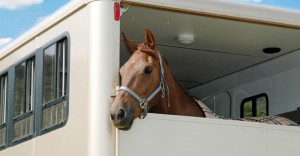
Horsebox Safety Week

Have you heard of the Horsebox Safety Week?
This campaign ran between the 4th and 10th of April and was launched by an insurance company. The goal was to raise awareness of the risks involved when loading and transporting horses, and to encourage horse owners to perform a few key safety checks before transporting their horse in order to prevent accidents.
The most common injuries related to horse transportation were caused by legs falling through rotten floors or tyre blow outs that led to overturned boxes. Horse boxes and trailers are required to pass an annual MOT or ministry plating but there are no inspections or security checks to ensure these vehicles are safe and suited to carry horses.
Recent research with data from the company has shown that 19% of injuries in horse boxes and trailers result in the horse being euthanized. Sadly, many of these accidents could have been easily avoided. For this reason we feel it is urgent to spread the word among horse owners about the importance of doing maintenance and safety checks on all the equipment involved on horse transportation.
Take a good look at your vehicles regularly:
- Ensure that there are no visibility or lighting issues that may interfere with safe driving. All bolts and latches should be working properly to allow easy opening if necessary.
- Take some time to check your tires. It's important to verify if your horseboxes and trailers are equipped with the right type of tires (the tires on your horsebox are different from the tires on your car) and check their general condition (age, pressure, tread depth, and integrity of the tire wall). Please remember that if your tires are too old, damaged, worn, or have not been inflated with the right pressure you will have limited control over your vehicle and risk having tire blow outs.
- Keep an eye on the floors, ramps and sidewalls. Over time, these surfaces suffer considerable damage and come into contact with a lot of liquid. Ongoing damp conditions will often rot the floor. It is recommended to lift the rubber matting and check the floor (above and below) for damage. Prod suspect areas with a flat head screwdriver and if you find any damage or rot the problem must be checked out by a professional before using those structures to load or transport horses. Check the floors, ramps and sidewalls every few months.
- Keep in mind that horse boxes and trailers have a legal amount they can carry and exceeding this limit has serious safety implications.
Don't forget to perform these safety checks every few months and keep your horses safe!
Would you like to know more about horses? Check our Equine Courses:
Equine courses
Published: 14 Apr 2016
Read the previous article: Bringing a kitten home

